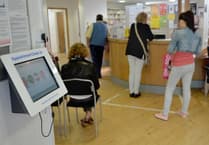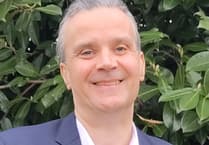REVIEW, Copenhagen, Minerva Theatre, Chichester, until September 22: LIFE is pretty uncertain at the best of times but imagine how much worse it must be in the midst of war.
A curious incident of the Second World War was a meeting in occupied Copenhagen between two of the leading physicists of that era, who had been close friends and work colleagues in the 1920s but were now on opposite sides of the conflict.
What was discussed by Dane Niels Bohr, who was half Jewish, and German Werner Heisenberg at that 1941 meeting has intrigued historians and scientists ever since because, in a similar way to Rudolf Hess’ flight to Scotland during the war, no one knows Heisenberg’s motive or exactly what was said.
Heisenberg is famous for his ’Uncertainty Principle’ which fundamentally changed atomic physics, and this theme of uncertainty in life as well as physics is the constant theme of Michael Frayn’s challenging and intriguing play, Copenhagen, now revived at Chichester 20 years after its premiere.
Thanks to a helpful chart in the production’s programme, non-scientists can see how the atomic bombs detonated by the Allies on Japan in 1945 were developed through discoveries and deductions by physicists working in a number of countries from 1900. Bohr was one of the most high profile scientists and a magnet for younger acolytes, such as Heisenberg, until the war split their loyalties and ambitions.
Copenhagen is a three-hander, with Charles Edwards as Heisenberg, Paul Jesson as Bohr and Patricia Hodge playing Bohr’s wife, Margrethe - a necessary lighter foil to the dense, often angry, conversations between the men. All the actors deserve high praise indeed for keeping the two hours of dialogue focused and intelligible, despite never leaving the stage.
The second half of the play is mostly superfluous in terms of adding to our insights into the characters or situation of these real people - it gives extra layers of complexity to what is already an opaque set of circumstances - but Frayn seems to want to take the opportunity to make Heisenberg appear more sympathetic.
The barest of sets, with just three bentwood chairs, no costume changes and minimal effects created with sound and light aided the audience’s concentration, which was not helped by the time shifts when, years later, the Bohrs were still discussing Heisenberg’s reason for visiting his old mentor and colleague.
His possible moral dilemma in leading Nazi research towards creating an atom bomb is one of the thought-provoking issues to which a modern audience can relate and the closing philosophical nuances of uncertainty also left question marks of their own.
ALICIA DENNY




